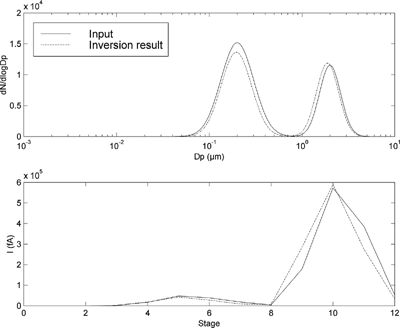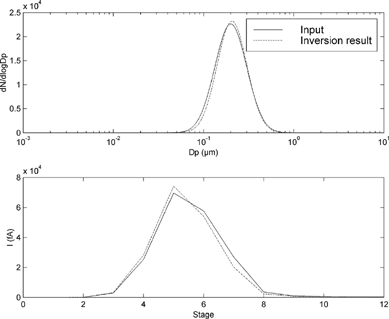Figures & data
Figure 1 The logarithms of the singular values of the response matrix for the ELPI with an electrical filter stage. It is easy to see that the best degree of ill-posedness is achieved when making an inversion to the current distribution. The kernel for the mass distribution is slightly more ill-posed than the kernel for number distribution.
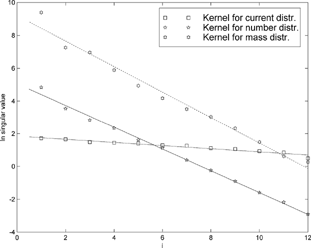
Table 2 Degrees of ill-posedness and effective numerical ranks for various ELPI make-ups
Table 1 Modes of the distributions used to study the numerical properties. The exact value of N is not significant as the space charge deposition is neglected. A linear problem, the inversion uses only relative values
Table 3 The distributions used to study the proposed inversion procedure
Figure 2 The result of the inversion of distribution A. Above, the number distributions of the distribution and its inversion result are depicted. The simulated ELPI currents from the both distributions are shown below. It is remarkable to see how a modest error in the number concentration of the second mode causes a large error in the simulated currents while a quite large error in the first mode causes almost no error in the simulated currents.

Figure 3 The inversion result of distribution B. The graphs as in . It is quite ramerkable how well the algorithm has been able to fit the function although two distinct peaks are not visible.
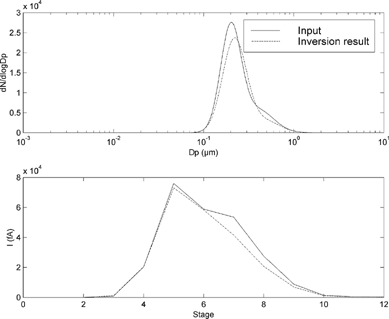
Figure 6 An example of the inversion of a diesel emission distribution. Both the number distributions and the current distributions are normalized. Above, the number concentrations from the inversion procedure, from the long and the short SMPS are presented. Below, the measured ELPI currents and the simulated currents from the inversion result and the SMPS scans are shown. The comparison of simulated and measured currents shows that the inversion has succeeded quite well. The difference between the currents is at largest on the filter stage.

Figure 7 An example of the inversion of a diesel emission distribution. Figures as in . In this case, the SMPS and inversion result number concentrations agree so well that there is no need for normalization. The comparison of simulated and measured currents shows that the nucleation mode generated by the algorithm is larger than the measured currents allow. The difference between the currents is at largest on the lowest impactor stage.
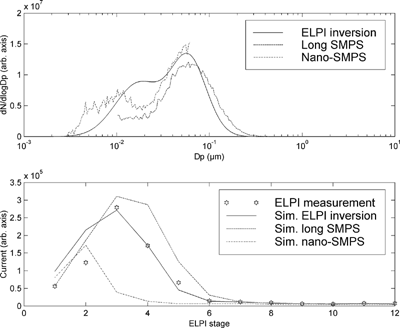
Figure 8 An example of the inversion of a diesel emission distribution. Figures as in . The inversion produces a “shoulder” that has no counterpart in reality. However, this can be detected by comparing the simulated current of produced by the inversion result with the actual measurement. This kind of behavior, which results form a bad initial values, was not detected with unimodal distributions the CMD of which was at least 200 nm.

